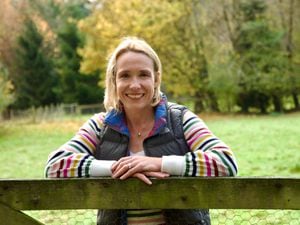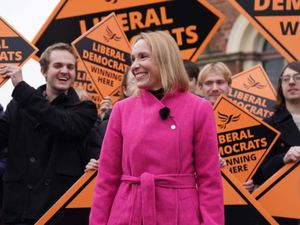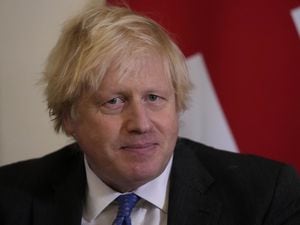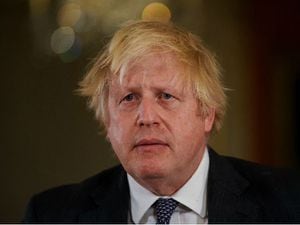The major issues in North Shropshire - and it's very blue voting history
If you could create a Tory constituency in a lab, you would probably end up with something like North Shropshire. That was the verdict of Martin Daubney, one of the 13 candidates seeking to end the almost-permanent Conservative hegemony in what is traditionally one of the truest of blue seats.
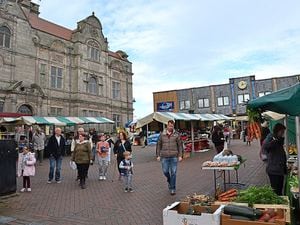
Certainly, when Owen Paterson stood on the stage at Shrewsbury Sports Village in December 2019, it looked like he had a job for life. Re-elected with a record majority of almost 23,000, the former cabinet minister had secured almost 63 per of the vote, and his position looked unassailable. But if a week is a long time in politics, two years seems like an age. And few would have been able to predict the remarkable turn of events of this autumn, which saw Mr Paterson found to have broken parliamentary rules and resigning from the House of Commons.
The big question though is whether the Paterson affair will take a fresh twist, with one of the challengers achieving the seemingly impossible by taking the seat from the Conservatives.
On paper it looks like a tall order.
North Shropshire election history
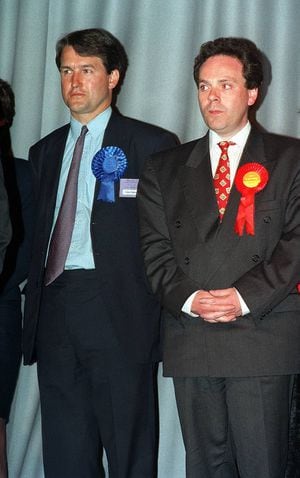
Over the past 189 years, there have been just two instances when the constituency has been represented by a non-Tory. At the first election in 1832, when the constituency was much larger, and elected two MPs, Whig John Cotes was elected in second place, behind Tory Sir Rowland Hill.
And from 1904-1906, the Oswestry seat, which accounted for a broadly similar area, was held by Liberal Allan Bright, who took the seat in a by-election. Otherwise, it has been held by Tories ever since, although Labour did run them close in Tony Blair's landslide of 1997, when Ian Lucas came in 2,195 votes behind Mr Paterson.
The third largest constituency in the West Midlands, North Shropshire is a vast, sparsely populated area, with no major urban centre. Oswestry, once a key battleground in the wars between England and Wales, is its largest town, with a population of about 17,000.
Sport
Its main football team, The New Saints, has won the Welsh Premier League a record 12 times, and occasionally makes headlines in the national media for its forays into the Europa League.
Main towns
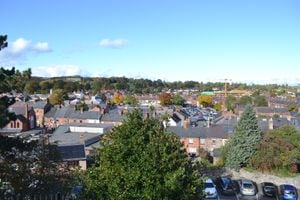
Twenty miles north-east of Oswestry is Whitchurch, reputedly the oldest town in Shropshire, dating back to 70AD. Once famous for its role as a centre of cheese-making, Belton Cheese continues to be an important employer in the town, but is now overshadowed by logistics company Grocontinental.
Between Whitchurch and Oswestry lies Ellesmere, a town which rose to prominence in the 19th century following the construction of the canal. The idea was too link the town to the Wirral Pensinsular and what would become known as Ellesmere Port, but Thomas Telford was forced to admit defeat in his ambitious feat of navigation on reaching Llangollen. Home to nine glacial lakes, or meres, the town was also once an important centre for cheesemaking.
South of Whitchurch is Wem, until recently the civic headquarters of the now defunct North Shropshire Council. Described by Prof Richard Hoyle of Reading University as, "an archetypal medieval-planned castle town" which "can take its place alongside the best examples in England", Wem was once home to George Jeffreys, the infamous 'hanging judge' of the 17th century. It is also the home town of late actor Peter Vaughan – best known as Grouty in Porridge – and Inbetweeners star Greg Davies.
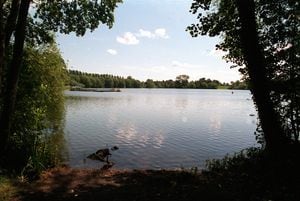
To the east of the constituency lies Market Drayton, once home to two of Shropshire's most controversial residents. Styche Hall is the birthplace of Robert Clive, or Clive of India as he is better known, whose statue in Shrewsbury became the subject of fierce debate during last year's Black Lives Matter protests.
The town was also home to 1930s British fascist leader Sir Oswald Moseley following the separation of his parents, although it is said that Moseley was deeply ashamed of his family's reduced circumstances at this time, and tried to destroy all records of his time in Drayton. It is fair to say that the people of Drayton do not seem too keen to highlight his link with the town either.
The rest of the constituency is largely rural, with the vast area of countryside south of Oswestry taking in the villages as Melverley on the River Severn floodplain, Knockin – home of the famous Knockin Shop and Baschurch. This forms North Shropshire's agricultural heartland, the sector still forming an important part of the local economy.
Demographics
On paper, the demographics suggest North Shropshire is fairly close to the national average. Unemployment is low, but at £479 a week, average pay levels are considerably below the national average. These figures only paint a very superficial figure, though, and hide great disparities in wealth.
At 15.8 per cent, the number of people holding senior managerial positions is substantially higher than both the national and regional averages, but the number of people in professional occupations is below average, as is the number of people with degree-level qualifications. Almost 18 per cent of the population is retired, and there are concerns that a shortage of well-paid, highly skilled jobs is causing a "brain drain" of young people to more urban areas.
Main issues
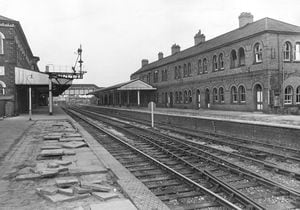
Unsurprisingly for such a rural area, transport has been identified as a major issue. Oswestry has been cut off from the national railway since the Beeching cuts of 1966, and Mr Paterson spent much of his time in parliament calling for the rail link to Gobowen to be reopened. The recent Budget saw £50,000 allocated for a feasibility study, and in the opening days of the campaign transport minister Chris Heaton-Harris hinted that the line could reopen within three years if the service proves to be viable.
Recent concerns about ambulance response times are perhaps also a reflection of the rural nature of the county, with poor road links between the towns often cited as holding the area back. Again, Mr Paterson has repeatedly called for the A5 between Shrewsbury and Oswestry to be upgraded to a dual carriageway, but the funding has yet to be secured. Plans for a Pant-Llanymynech bypass have stalled after the devolved Welsh government, which was due to have part financed the project, announced a review of all road schemes.
But probably the biggest issue facing the constituency will be the state of health care.
The debate about the so-called Future Fit plan, which would see the reconfiguration of the main hospitals in Shrewsbury and Telford, continues to rumble on. It has been proposed that A&E services will be focused at Shrewsbury under the £500-million plan, with Telford's Princess Royal Hospital becoming a centre for planned care.
But the scheme continues to cause divisions across the four corners of Shropshire, with positions becoming increasingly entrenched along geographical lines. It is interesting that the Conservative candidate, former surgeon Dr Neil Shastri-Hurst, has taken great care not to pick a side in this battleground, saying that he would instead use his expertise to look at it 'with a fresh pair of eyes'.
His rivals will be hoping that the voters of North Shropshire will take a similar approach when deciding who will be their next MP.

